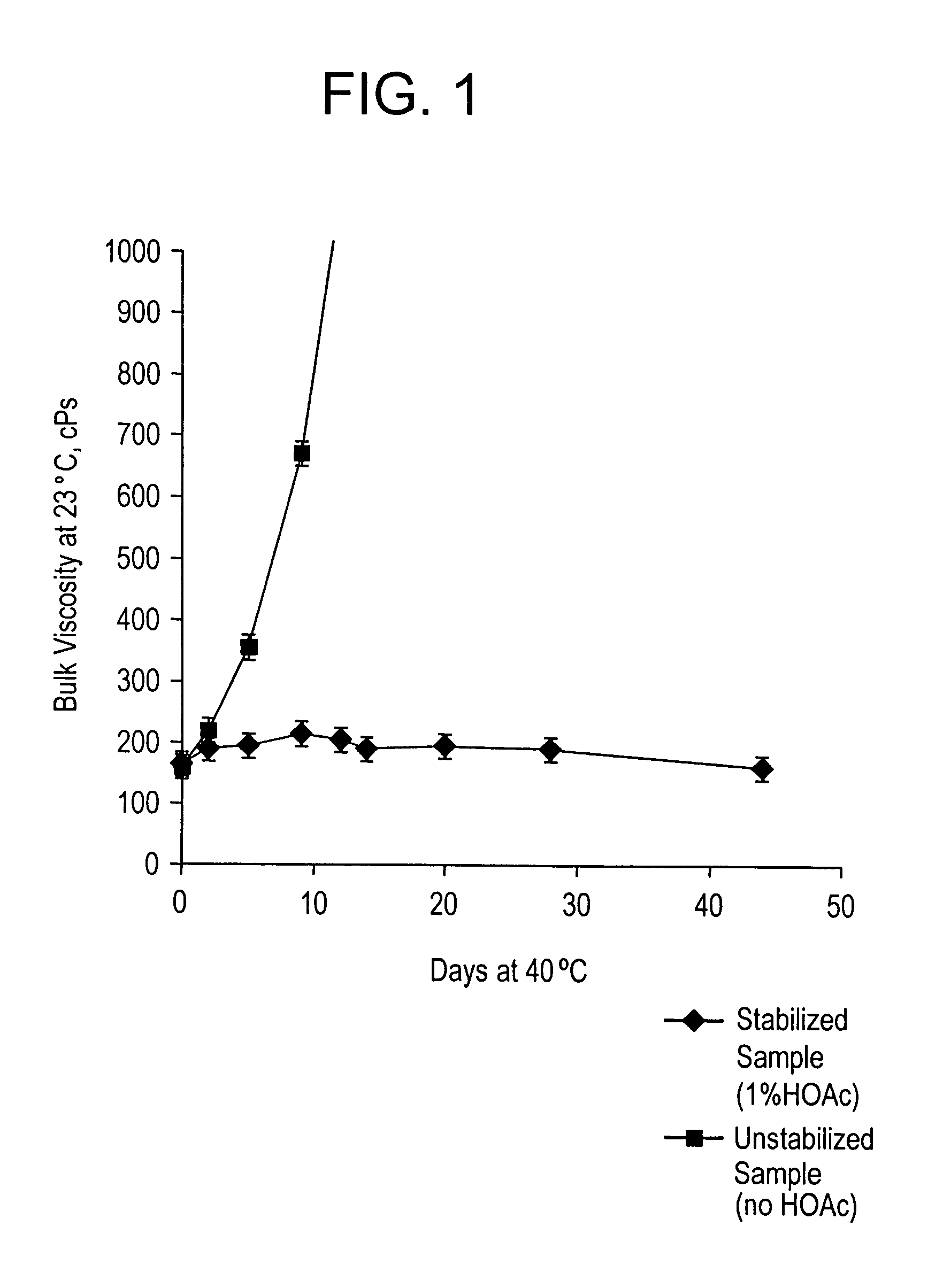Stable wet strength resin
a technology of polyaminoamideepichlorohydrin and wet strength resin, which is applied in the field of stabilizing polyaminoamideepichlorohydrin wet strength resin, can solve the problems of reducing the ph value and synthesis of stable pae resin of high solid content, and achieves enhanced gelling stability, enhanced stability, and excellent wet strength performan
- Summary
- Abstract
- Description
- Claims
- Application Information
AI Technical Summary
Benefits of technology
Problems solved by technology
Method used
Image
Examples
example 1
[0054]To a 2000 ml reaction flask is charged 412.68 g of diethylenetriamine. The reactor is purged with nitrogen and the solution is heated to 150° C. and 654.12 g of DBE-2 (dibasic ester-2 from E.I. DuPont de Nemours and Company, Wilmington, Del.) is charged into the reactor over one hour while the temperature is maintained. Methanol begins to evolve after DBE-2 addition is started. The methanol is refluxed through a condenser. The reaction temperature begins to drop once methanol is formed. Reflux is maintained for half an hour after the completion of DBE-2 addition and then methanol is removed by distillation. The reaction temperature rises to 150° C. The reaction temperature is maintained at 150° C. for 5 hours. Water (810.7 g) is then slowly added into the reactor with stirring to provide a 50% polyaminoamide polymer solution.
example 2
[0055]To a 1000 ml reaction flask is charged 204.3 g of diethylenetriamine. The reactor is purged with nitrogen and 50 g of water, 4.0 g of sulfuric acid and 295.2 g of adipic acid are charged into the reactor while the mixture is heated to 165° C. Water is collected through a condenser. The reaction mixture is maintained at 165° C. for 5 hours. Optional vacuum is applied to increase polymer molecular weight. Water (423.5 g) is then slowly added into the reactor with stirring to provide a 50% polyaminoamide polymer solution.
example 3
[0056]To a 1500 ml reaction flask is charged 475.95 g the 50% aqueous polyaminoamide solution prepared in Example 2, and 362.72 g of water. The solution is mixed well and purged with nitrogen. The solution is cooled down to 15° C. and 162.48 g of epichlorohydrin is added into the reactor over one hour. The temperature is controlled below 20° C. After completion of epichlorohydrin addition, the reaction is allowed to proceed adiabatically for two hours. The reaction mixture is then heated to 45° C. and maintained at 45° C. for 4-8 hours. The reaction is quenched with about 26.4 g of sulfuric acid to bring the pH to about 2.1-2.5. About 12.0 g acetic acid (1.0% based on product) and 160 g water are added to make a final product with 34-36% polymer solids.
PUM
| Property | Measurement | Unit |
|---|---|---|
| weight percent | aaaaa | aaaaa |
| weight percent | aaaaa | aaaaa |
| weight percent | aaaaa | aaaaa |
Abstract
Description
Claims
Application Information
 Login to View More
Login to View More - R&D
- Intellectual Property
- Life Sciences
- Materials
- Tech Scout
- Unparalleled Data Quality
- Higher Quality Content
- 60% Fewer Hallucinations
Browse by: Latest US Patents, China's latest patents, Technical Efficacy Thesaurus, Application Domain, Technology Topic, Popular Technical Reports.
© 2025 PatSnap. All rights reserved.Legal|Privacy policy|Modern Slavery Act Transparency Statement|Sitemap|About US| Contact US: help@patsnap.com

